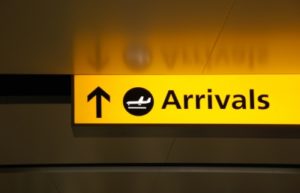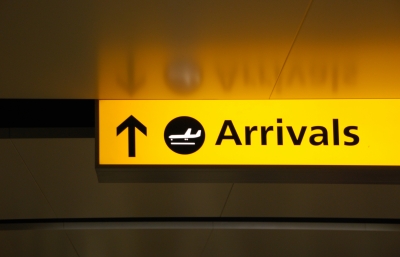 The National Economic and Development Authority (NEDA) Board, at its first meeting under the new Duterte administration, approved nine projects worth P171.14 billion in total, including those related to transportation.
The National Economic and Development Authority (NEDA) Board, at its first meeting under the new Duterte administration, approved nine projects worth P171.14 billion in total, including those related to transportation.
“Once implemented and completed, these approved projects will help attain our medium- and long-term development goals of making the agricultural sector competitive, improving mobility by making our transport system safer and more efficient, increasing disaster resiliency, and improving health services,” Socioeconomic Planning Secretary Ernesto M. Pernia said in a statement.
Ground transport works
Approved is the P37.8-billion Metro Manila Bus Rapid Transit (BRT)-EDSA plan of the Department of Transportation (DOTr). The project provides for an alternative mass transit in Metro Manila through a 48.6-kilometer BRT system on EDSA running from Monumento up to Diosdado Macapagal Avenue/Roxas Boulevard.
It will have integrated routes between the Ortigas Business District, Bonifacio Global City, and Makati Business District and be linked to the Ninoy Aquino International Airport (NAIA) terminals. It will also include off-corridors to the target Integrated Transport System terminals in the north, south, and southwest of Metro Manila, and near SM Fairview.
Other features include dedicated lanes with bus ways, depots, and up to 63 stations/terminals. These lanes include one lane per direction between stations, and two lanes per direction at stations. The project will also procure high-quality and high-capacity buses, install smart signaling systems at intersections and a central control system, and provide for a contactless automatic fare collection system.
The program is to be carried out from 2017 to 2019, and the BRT is expected to start operating by 2020.
Airport improvements
Also green-lit is the expansion of the Bicol International Airport’s passenger terminal building (PTB) area, an initiative of the DOTr and Civil Aviation Authority of the Philippines (CAAP).
The project, which calls for a new domestic-Principal Class 1 airport of international standards in Daraga, Albay, increases the airport’s PTB floor area from 5,250 square meters to 13,220 square meters.
Moreover, the runway is set for extension from 2.1 kilometers to 2.5 kilometers, while navigation aids, security equipment, and airport rescue and fire fighting vehicles are to be redesigned to current standards. The project strives to address passenger volume growth estimated at about 2.15 million by 2025, which may rise to about 4.4 million by 2035 given the increasing tourist and domestic travel to the Bicol region.
Total project cost is about P4.8 billion, and completion date is 2020.
Another cleared airport project under DOTr and CAAP is the change in scope of the New Bohol Airport Construction and Sustainable Environment Protection Project, an endeavor that seeks to relocate the existing domestic Tagbilaran Airport to a new facility of international standards in Panglao Island.
The changes include extending the runway from 2 kilometers to 2.5 kilometers; changing the PTB from a single-story to a two-story area with passenger boarding bridges; and expanding the PTB floor area from 8,400 square meters to 13,300 square meters.
The change is in anticipation of new airport and airline capacity requirements stemming from rising domestic and international airline passenger volumes to Bohol and other tourism destinations in the Visayas.
Consequently, total cost is seen to increase from P7.4 billion to P7.8 billion, with an expected project completion date of June 2018.
The NAIA public-private partnership (PPP) project of DOTr and Manila International Airport Authority received a thumbs-up too. The project is designed to improve safety and security, maximize capacity through “refreshed” infrastructure (airside requirements such as air traffic management), and improve passenger service standards in the existing NAIA.
Its implementation demands refurbishing or adding assets for air traffic and land side management, and for passenger services. It will be carried out through private sector concession, with the concessionaire to also operate and maintain the airport (both airside and landside) according to international standards.
The project’s expected cost is P74.6 billion and the concession period is to run from 15 to 20 years, including the design and construction phases. The DOTr expects to begin PPP procurement upon NEDA Board approval in September 2016, and to award and sign a concession agreement by September 2017.
Marine initiatives
The Maritime Safety Capability Improvement Project for the Philippine Coast Guard (PCG) Phase II, meanwhile, involves acquiring two heavy-weather, high-endurance 94-meter Multi-Role Response Vessels (MRRVs) that have a cruising range capability of 4,000 nautical miles. The vessels will have the capability of conducting continuous maritime patrol at 15 knots for up to 15 days, and will be used by PCG in Sea-State 6 (wave height of up to 6 meters) rough sea conditions.
Each vessel, PCG said, will enable the rescue of some 500 passengers in case of a maritime disaster, as well as provide the country with wider maritime coverage for strategic and national security purposes.
Given these upgraded vessel capacities, the project cost went up to P8 billion. And with the NEDA Board’s approval, the first sea craft is expected to be delivered by November 2020 and the second by March 2021.
Other projects given passes are the P23.5-billion Metro Manila Flood Management Project, Phase I of the Department of Public Works and Highways (DPWH) and the Metro Manila Development Authority (MMDA); P10.2-billion Inclusive Partnership for Agricultural Competitiveness of the Department of Agrarian Reform; as well as the P2.4-billion Eastern Visayas Regional Medical Center Modernization Project and the P2.2-billion Modernization of Gov. Celestino Gallares Memorial Hospital Project, both of which are undertakings of the Department of Health.
New approval procedures
Apart from these, the NEDA Board adopted new policies to improve and streamline the government’s approval processes for major public investment projects.
One policy updates the economic hurdle rate from 15% to 10% as a result of improved Philippine economic conditions, which in turn have lowered the cost of domestic and foreign capital. This will facilitate the economic justification (and therefore fast-track approval by government) of more projects that are designed to help spread out public services to more far-flung areas in support of poverty reduction.
Another is raising the Investment Coordination Committee’s (ICC) project cost floor from P1 billion to P5 billion to de-clog the pipeline of projects for ICC approval and promote greater decision flexibility and accountability of line departments in implementing their priority projects.
Approval of projects worth less than P5 billion will be delegated to heads of agencies, but must be reported by these agencies to the ICC prior to implementation. The NEDA Secretariat will assist agencies in facilitating such delegation to implementing agencies in an effective and accountable manner.
At the same time, the NEDA Board gave the go-ahead to the streamlining of ICC review procedures for minor changes in scope, design, cost, and extension of implementation of loan or grant validity of projects. Approvals of these projects will be delegated to the level of the ICC, the Department of Finance, or the NEDA Secretariat, based on existing rules and regulations.
Finally, the streamlining of the NEDA Board to 11 members and the ICC to six members was also recommended for approval.
Image courtesy of artur84 at FreeDigitalPhotos.net





